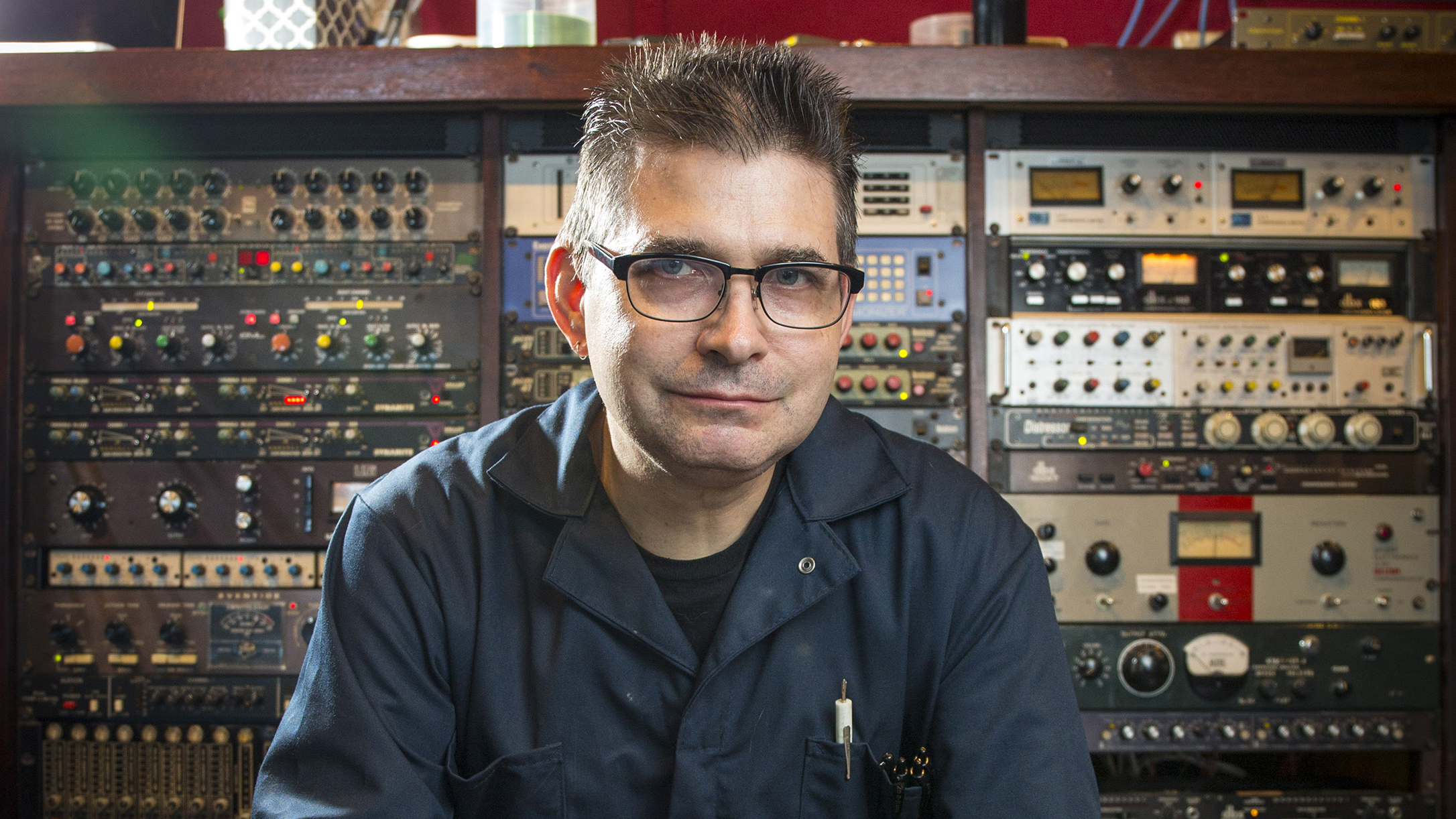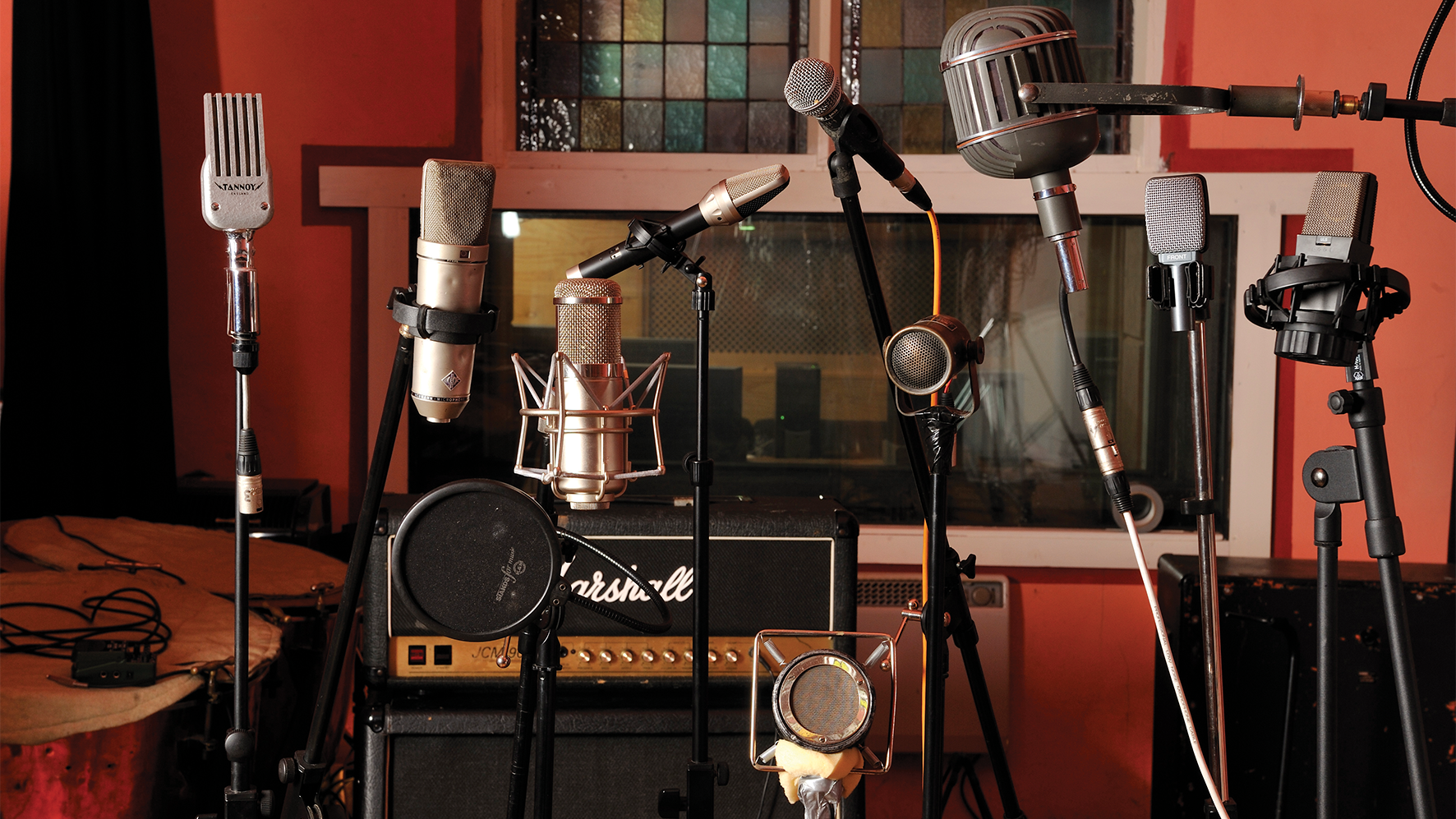"I experimented with that technique because I saw everybody else doing it, but I just never got good results with it": Steve Albini explains why he decided to break from traditional speaker miking methods in the recording studio

Steve Albini is always a fascinating interviewee, and whether talking about the artists he's worked with (especially Nirvana) or the way he works in the studio, the producer-engineer always has valuable insight to share that can benefit all musicians who ever hope to record their playing. But perhaps his views on recording mic technique in a new conversation with Premier Guitar are the most interesting of all.
"One thing that I do that I think is probably distinctly different from what a lot of other engineers do, I tend to have whatever microphone I’m using on the guitar in the middle of the speaker cone, and I don’t generally use microphones pressed up close to the grille cloth right next to the speaker," he tells Premier Guitar. "I tend to use microphones at a working distance of between eight and 14 inches from the cabinet."
This is in stark contrast to the conventional wisdom that suggests closer is better for isolation. Albini believes it's informed by live backline experiences – a different proposition to capturing sounds in the studio.
It always sounded slightly tweaked and muffled and weird
"A lot of engineers made their bones as live engineers," he notes, "where they’re trying to get isolation on stage, so they have the mics as close as possible to the speaker cabinet, and that practice translated into the studio.
"I experimented with that technique because I saw everybody else doing it, but I just never got good results with it. It always sounded slightly tweaked and muffled and weird. I found that when I put the microphone dead center on the speaker, then the sound hitting the microphone sounded more like what I heard when I was down on all fours listening to the speaker myself."

If the microphone is choked up tight on the speaker, you get a lot more low-frequency energy
Instead Albini trusted his ears with mic placement in the studios he worked in – including his own Electrical Audio facility in Chicago – and the results frequently spoke for themselves.
"Working distance has a big effect on the sound quality," Albini explains. "If the microphone is choked up tight on the speaker, you get a lot more low-frequency energy. You get a lot more muscular pumping low end from the proximity effect of the microphone, and, especially with ribbon microphones that are bi-directional and have a fairly exaggerated proximity effect, you can really use that to tune the response of the microphone.
Want all the hottest music and gear news, reviews, deals, features and more, direct to your inbox? Sign up here.
"So, I say that I use a working distance of between eight and 14 inches. If I’m in the closer part of that range, six to eight inches from the speaker, there’s going to be a lot more of the sub-low end emphasized in a bi-directional ribbon microphone, and that can be great to add weight and heaviness to a heavy guitar."
The upper end of that range also has distinct advantages for Albini.
"If the microphone is backed off more like 12 to 14 inches, then you get much more of an overall picture of the sound of the cabinet, where it’s not emphasizing any particular region, for lack of a better word," he says. "It’s a flatter representation of the sound coming off the speaker. Being able to tune the behavior of the microphone by moving the microphone in and out just by a matter of inches can make a noticeable difference in the sound quality."
Despite a tried and true approach to this technique, Albini also adds that he's constantly revising his other approaches in the studio with a consciously open mind – and this includes mic choices. And brands are very keen to send him the latest models to try.
"I get to play around with stuff that I’ve never heard before pretty regularly, and I like to try microphones I’ve never heard before," says Albini.
"This has proven enormously valuable over the course of the last 15 or 20 years. My routine behaviors have changed quite a bit as a result of these little, tiny experiments that I’ve done one at a time."
Read the full interview at Premier Guitar.

Rob is the Reviews Editor for GuitarWorld.com and MusicRadar guitars, so spends most of his waking hours (and beyond) thinking about and trying the latest gear while making sure our reviews team is giving you thorough and honest tests of it. He's worked for guitar mags and sites as a writer and editor for nearly 20 years but still winces at the thought of restringing anything with a Floyd Rose.